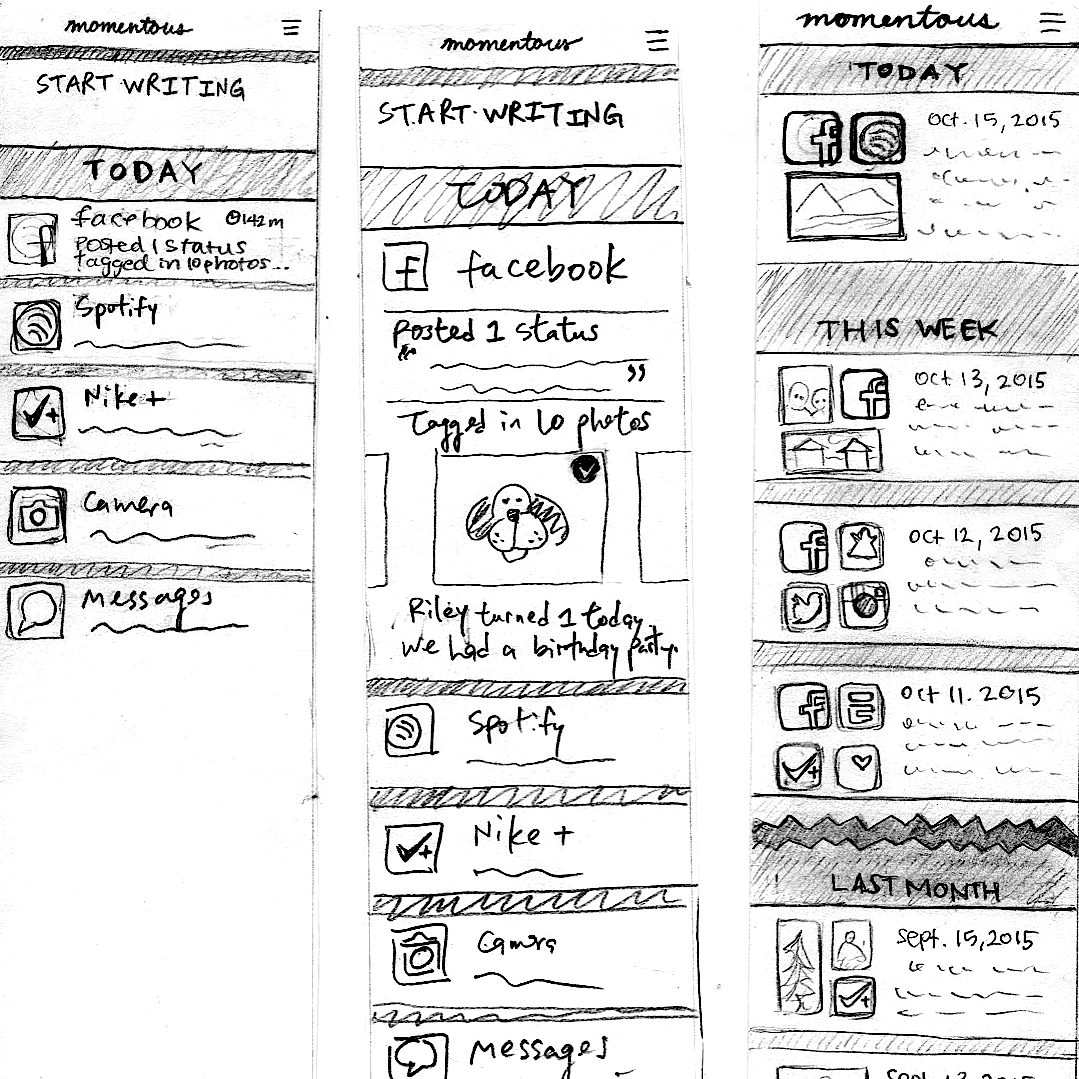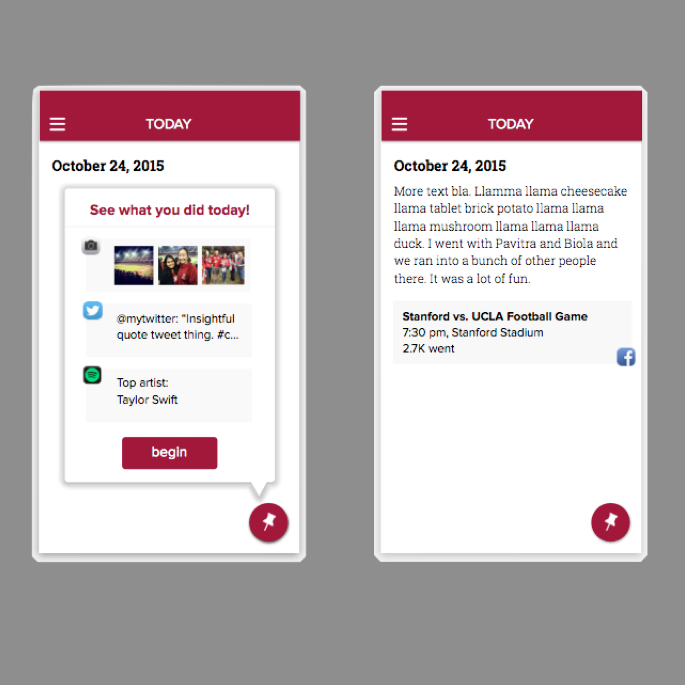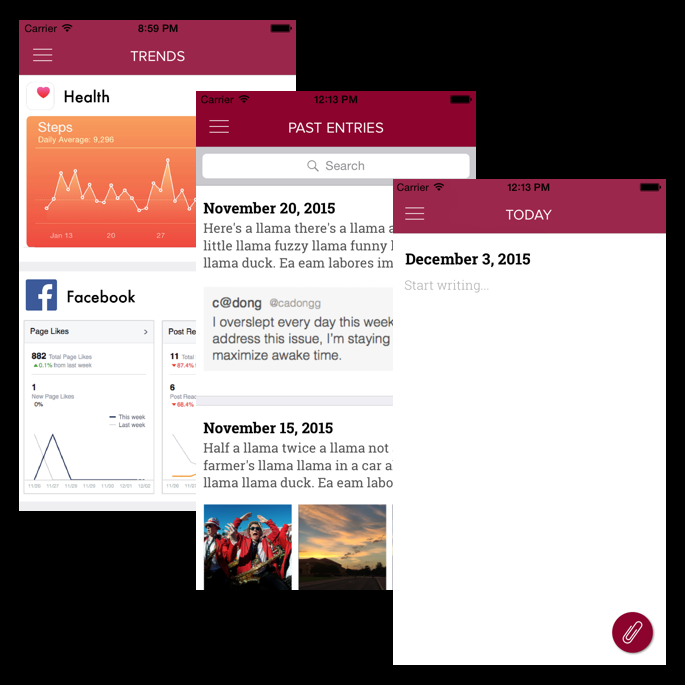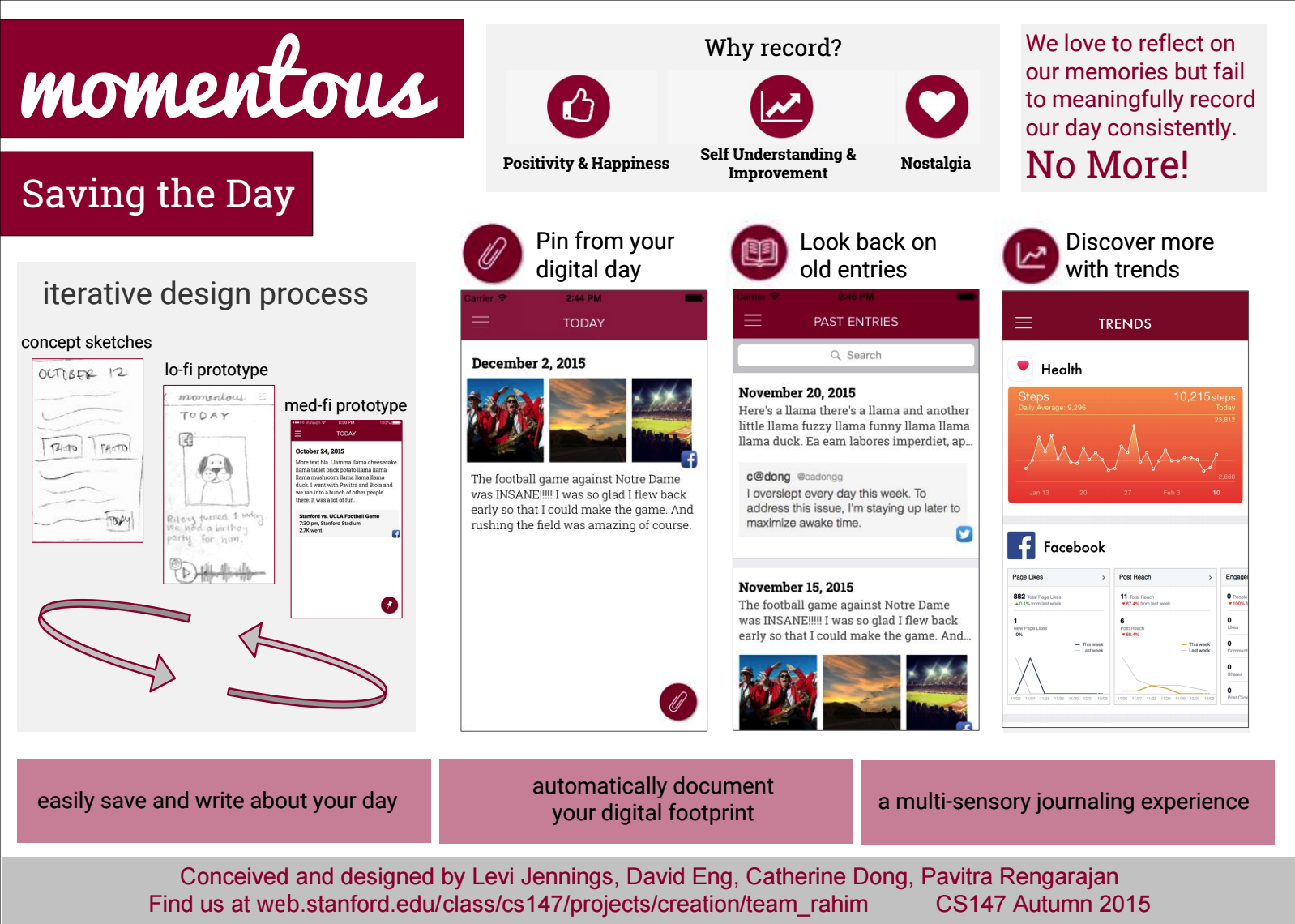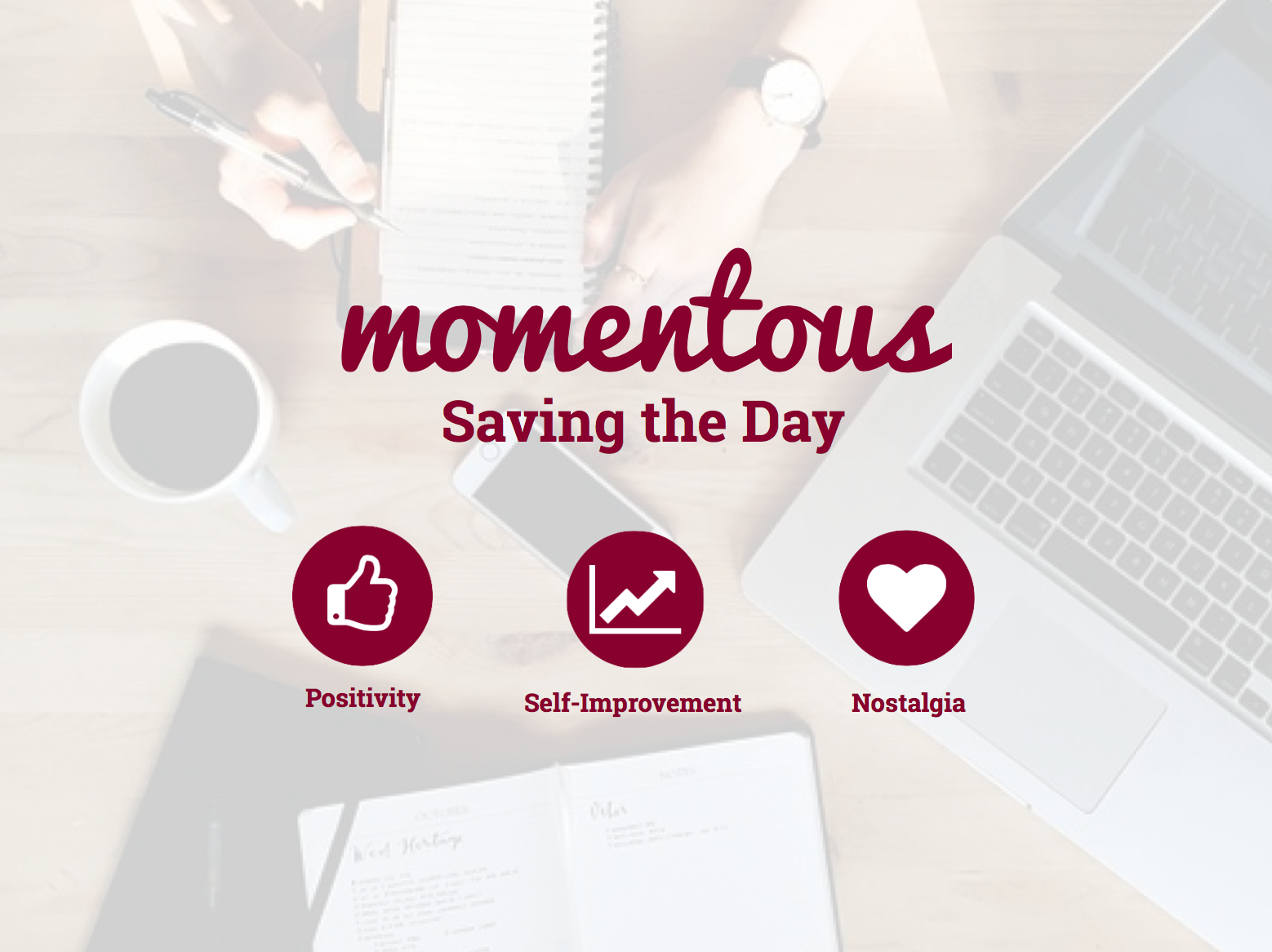The Process
Designing and creating an app in 10 weeks.
-
Weeks 1-2
Needfinding
We interviewed people to find needs.
-
Week 3
Points of View & Experience Prototypes
Our two points of view and the three experience prototypes that followed.
-
Week 4
Concept Video
Follow one boy's journey into Stanford through Momentous.
-
Week 7
Heuristic Evaluation
A heuristic evaluation of Momentous based on the medium-fi prototype.

